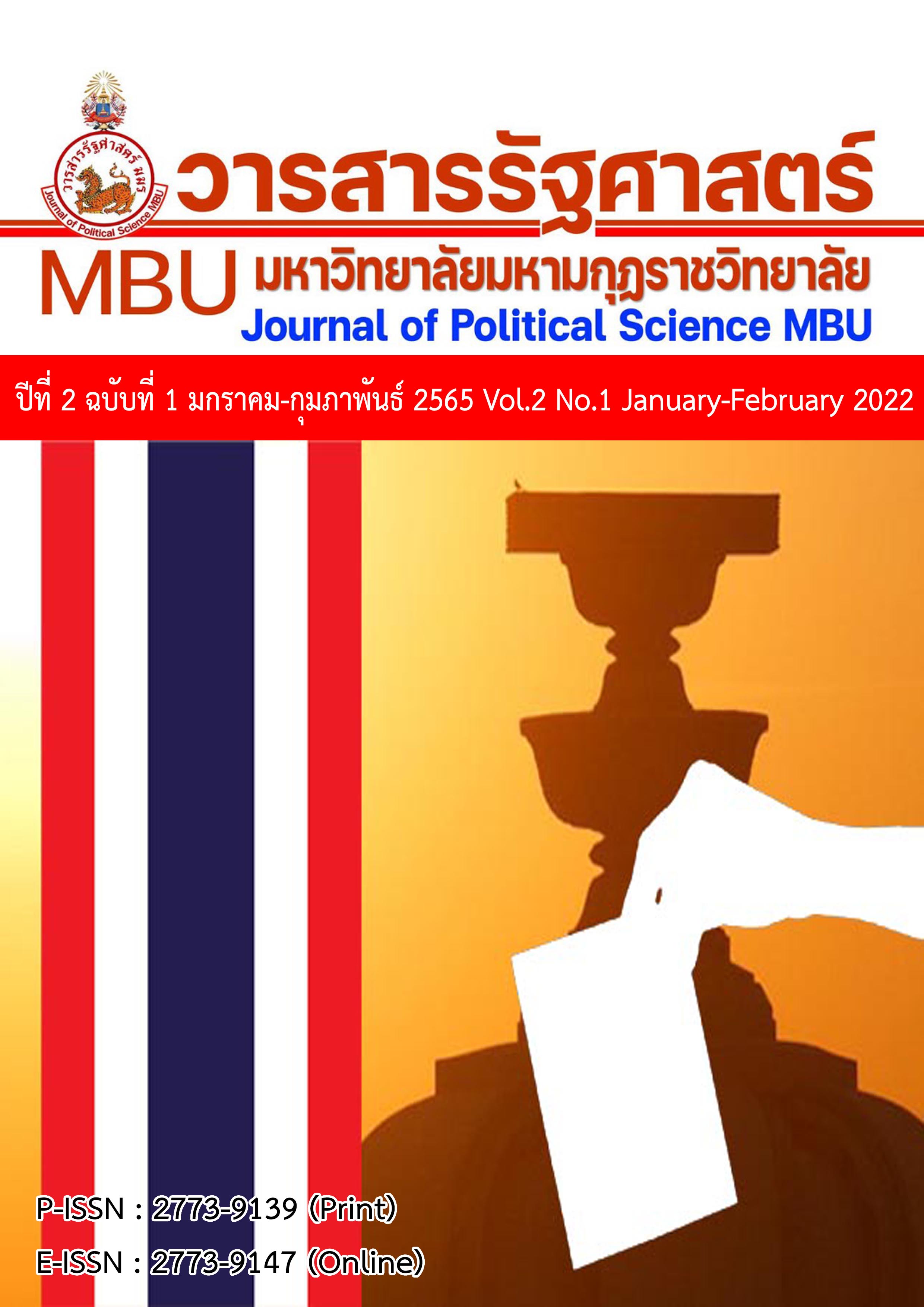AN APPLICATION OF THE BUDDHADHAMMA PRINCIPLE RELATED TO THE LOVE AND UNITY OF PEOPLE IN NONGYANGKAM VILLAGE, KONGNANG SUB-DISTRICT, TA BO DISTRICT, NONGKHAI PROVINCE
Main Article Content
Abstract
The purposes of this research were; 1) to study the principle of Dhamma related to the love in Theravada Buddhism 2) to study the love” in the dimension of Theravada Buddhism of people in Nongyangkam Village, and 3) to apply the Dhamma principle related to the love for creating the love and unity of people in Nongnakam Village. This research was the qualitative research by collected from document and 25 in-depth interviews / person, the data were analyzed by descriptive analysis according to the inductive method.
The results of research were found that 1) the study of the principles of love in Theravada Buddhism, especially the five precepts, resulted in empirical results that the community lived, had traditions and traditions to do good behavior. By the principles of Benjasin Principles in the six directions as a tool in the development of love for others in compassion, the discovery of the principles of the community, to prosperity, morality and ethics 2) “Love” in Theravada Buddhism for the villagers is the development of one's mind, honesty and morality. Because when the villagers are in love with Other people will surely delight their minds with the intention that they will not violate carelessness and not destroy their health. 3) the application of principles related to love for building love and unity among the villagers is that it is difficult to build the confidence and confidence of the people in the community and the importance of the creation of fairness without prejudice. According to the Brahma Vihara principle, which is consistent with the local, plural, natural and ordinary study of people. The principles are applied To create a love that consists of wisdom, creates love, unity, has a beautiful mind, creates lasting happiness.
Article Details

This work is licensed under a Creative Commons Attribution-NonCommercial-NoDerivatives 4.0 International License.


